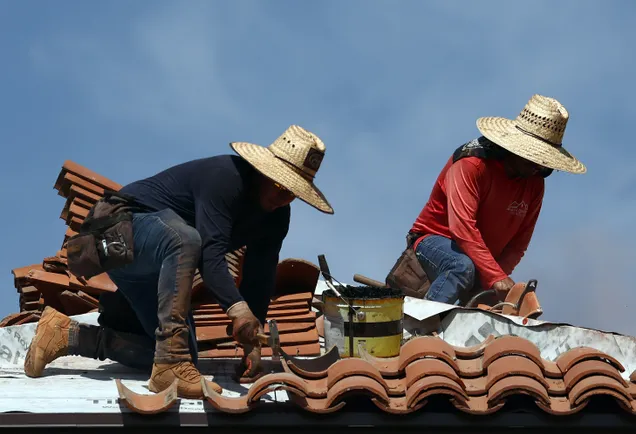Falls have long been one of the construction industry’s most life-threatening hazards, and that trend is heading in the wrong direction.
In the most recent publicly available data, the rate of falls to a lower level in U.S. construction increased 13.3% from 2011 to 2022, as the raw number of falls jumped by 52.7%, according to a fatal injury trends analysis of U.S. Bureau of Labor Statistics data by Silver Spring, Maryland-based CPWR — The Center for Construction Research and Training.
The analysis found that majority of those falls, 70%, occurred at smaller companies that employ 10 or fewer employees, according to a July 31 CPWR webinar.
Falls also accounted for two of the most common kinds of nonfatal injuries leading to days away from work, CPWR found. Falls to a lower level and falls on the same level accounted for 13.4% and 9.9%, respectively, of all days away from work cases.
CPWR Data Center Director and webinar host Amber Trueblood pointed to other nonfatal cases as indicators of the broader problem. Looking at the bigger picture can help understand how hazards contribute to other potential injuries, she said.
“We do need to understand nonfatal injuries and near misses to actually prevent fatal injuries,” Trueblood said.
Of construction jobs, roofers had the highest number of fatal falls in 2022
The construction occupations with the highest number of fatal falls, slips and trips in 2022, the most recently available public data.
Trueblood told Construction Dive it’s a challenge to reach small businesses but said CPWR offers tools and educational programs to help employers learn how to control hazards, train workers and use effective equipment.
Other causes for days away from work, such as overexertion involving outside sources (15.4%) and other exertions or bodily reactions (6.5%) were among the six most common causes for nonfatal injuries leading to time away from the job.
Those kinds of injuries stem from lifting, pulling, pushing or carrying materials or objects and can occur following a single event or multiple similar strains. They can also result in musculoskeletal disorders, which, Trueblood noted, can become a predictor of a future fall or opioid use.
“I also like to highlight as an injury epidemiologist that despite an injury not resulting in a death, a non-fatal injury can still greatly impact workers and their families as well as employers and a lot of these injuries can have lifelong consequences that we need to understand,” Trueblood said. “So in addition to preventing fatal injuries we can also hopefully keep our workers safe and healthy long term.”

